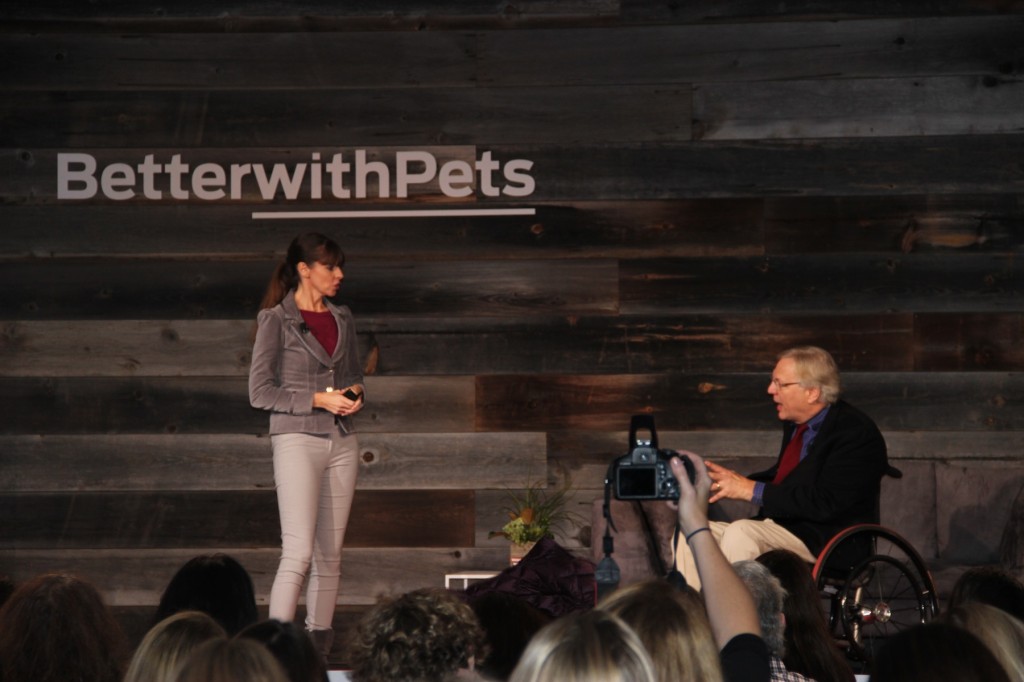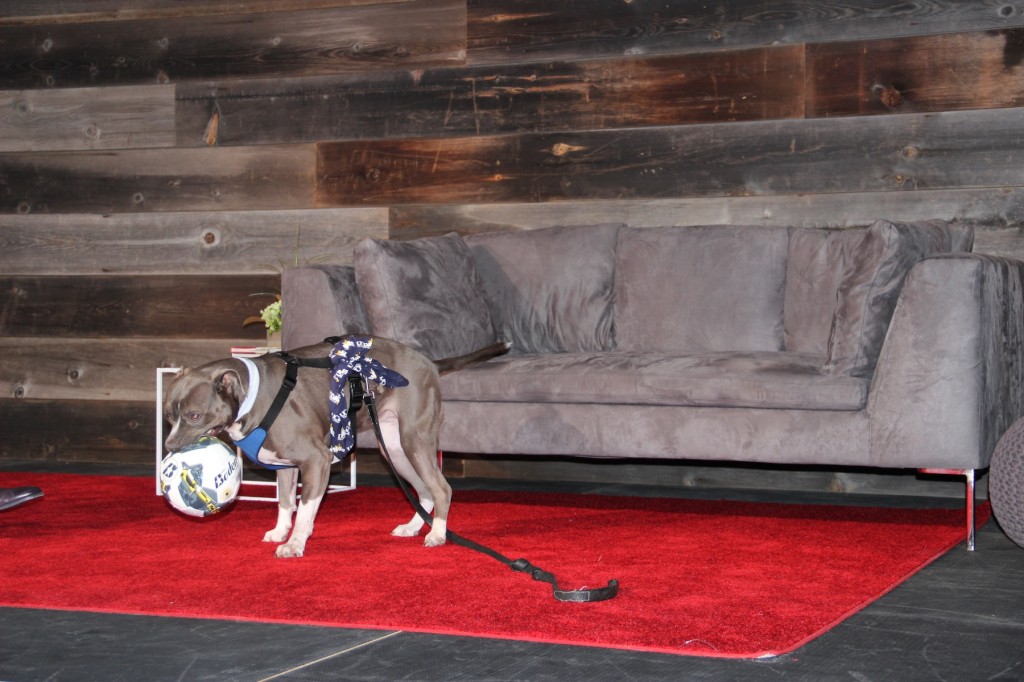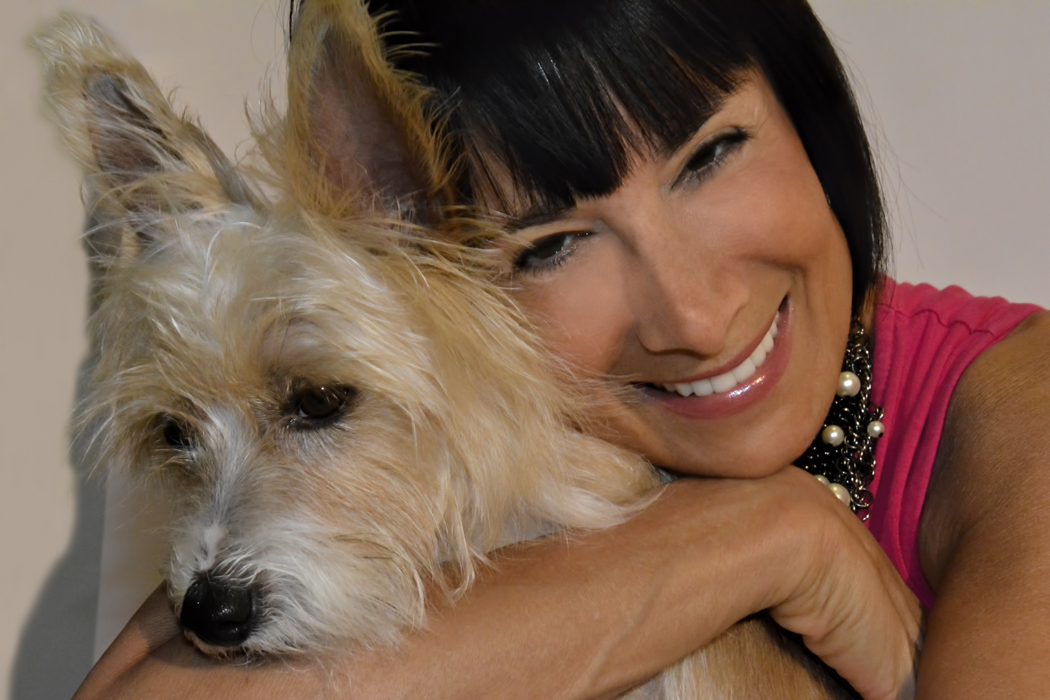Dog Training Guru, Victoria Stilwell, Addresses Aggressive Behaviors in Dogs at Purina Better with Pets Summit
I went to a really wonderful event recently put on by Purina, called the Better with Pets Summit. In its sophomore year, the Summit focused on how the human-pet bond is evolving, and how innovation, technology and new thinking is changing our relationships with our pets. It was a fascinating day-long event here in New York City, with master of ceremonies John Hockenberry, host of public radio’s “The Takeaway.” And, kudos to Purina, for bringing together some of the brightest minds in all different realms of the pet space.
Because of our ongoing challenges with our rescue dog, Jasper, I wanted to hear what positive training guru, Victoria Stilwell, had to say about aggressive behaviors in dogs, and to have the opportunity to speak with her about Jasper, in particular. So, I was excited to sit in on her session.
The Power of Positive Training
Stilwell’s session focused on the power of positive training; why it’s more humane, is learned faster and lasts longer than fear-based training. She talked about how old methods of training where you needed to show your dog who’s boss, including doing terrible things like flipping your dog over and holding him down to display your dominance, has done so much harm to the critically important human-canine bond. Nourishing and developing that bond is what creates those amazingly trained dogs, who look so happy to please us and eager do what’s asked of them.
And now, science has actually proven that point. Dogs were conditioned over months, via positive training, to lie perfectly still in an MRI machine, so their brain waves could be observed and recorded when stimulated with positive experiences. What scientists found, was when the dog’s parent entered the room, a part of their brain lit up that registers pleasure and the anticipation of something great. Just like us. We now know, through proven science, that dogs feel emotions just like humans. Pretty amazing, right? All the more reason to abandon any fear-based training techniques, when you think of the stress and pain it inflicts on our precious pets.
My Interview with Victoria Stilwell
I was fortunate enough to be able to meet up with Victoria backstage, and ask her some questions (prior to the interviews, I’d filled her in on our little man and his issues). For all of you who have fear aggressive dogs, I hope this is helpful.
B&S: Victoria, do fear aggressive dogs ever fully recover?
VS: A smaller percentage do and a larger percentage don’t. They get better, but they’re never 100%. But, look at it like this. No human can say their behavior, 100% of the time in the future, won’t ever be influenced by fear, that they’ll always be happy, that no one will ever scare them. We can’t predict the future.
When people say fear aggressive dogs are not predictable, that’s not really true. They’re completely predictable. The thing is, you’re not going to know when your dog is starting to feel that fear. So, that’s where you have to really observe their body language, be really cognizant of the places you’re taking him. For example, if you’re in an elevator and someone wants to get in, let them go. Don’t put him in that position.
There’s always going to be that memory. In humans and dogs, the fear memory doesn’t get erased. But, it serves a purpose; it’s important for their survival.
B&S: What about transference; Jasper will go to bite me when something triggers him. What do I do?
VS: When a dog is in the red zone, it’s done. They can’t hear you. You have to physically walk away. You’ve got to get him to do something else, so he’s less focused on what’s scaring him and more on you. I call it the Power Walk; re-directing power from the dog.
B&S: Suppressed behavior is not changed behavior. How do you get to changed behavior in fear aggressive dogs?
VS: It take a while. Remember about the Band Aid coming off quickly? You can’t just go, boom, it’s fixed. You said it takes a village; it does. You have to have your support system around you. And patience, and time. And sometimes, the dog will never get to the point where they’re 100%.
B&S: What about medication? Yes or no? When and where?
VS: Depending on the dog, sometimes medication can make it better; sometimes it can make it worse, sometimes it has no effect, whatsoever. But, if your dog is very stressed, try it and see. But, don’t use it just on its on, without all of the other things you’re doing.
(Editor’s Note: Always work with a veterinary behaviorist when evaluating whether to use medication)
A Quick Note About Bean
As a quick note, I also got to see veterinary gastroenterologist and nutritionist, Dr. Stan Marks, speak. His session was all about the fascinating and inspiring story of a Pitbull dog named Bean. Bean was a shelter dog, who was diagnosed as a puppy with canine muscular dystrophy. She was slated to be euthanized, until a couple of wonderful doctors became smitten with her incredible will to live and her indomitable spirit. Both human and canine doctors worked side by side to figure out how to tackle this disease and help Bean to live as comfortable and as normal a life as possible. She underwent years of operations and therapy, which included removing her voice box and installing a tube in her neck, through which she breathes, and surgically implanting a feeding tube in her side. While this all sounds awful, it was necessary to keep Bean alive and allow her to be comfortable. Today, Bean is a happy, well-adjusted dog with a loving mom and dad (both vets), and a village of professionals making sure she has everything she needs. Her illness has taught both the human and canine docs much more about how to successfully treat muscular dystrophy. We actually got to meet Bean and here’s a picture of her above. I had goosebumps by the end of Dr. Marks’ talk, and was so honored to meet him and Bean backstage.
In Summary
Victoria Stilwell is one of my key go to trainers for solid, great advice on how to nurture the human-canine bond, while teaching our dogs to be good citizens. We have to step completely away from any training that promotes a dog’s obedience through fear. Shock collars, manhandling, all of those awful techniques, have been proven to do a lot of harm to the human-canine bond that’s so important to a successful relationship with our dogs. There are some wonderful books from Victoria. You really can’t go wrong so, if you’re interested, I’d look to see if one of them addresses specifically what issue you’re dealing with.
The Purina Better with Pets Summit was a wonderful experience. My fellow dog blogger and friend, Jen DeHaan, was there, too, and is doing a few stories on her experience. I’d recommend those interested in learning more about what took place that day to go over to Dogthusiast.com and find out.
What training challenges do you have with your dog? Tell me about it in the comments.









